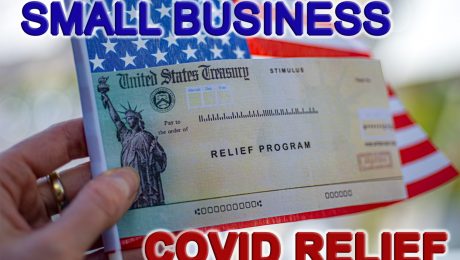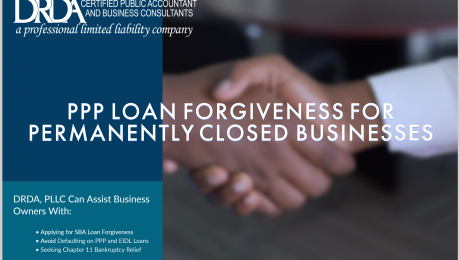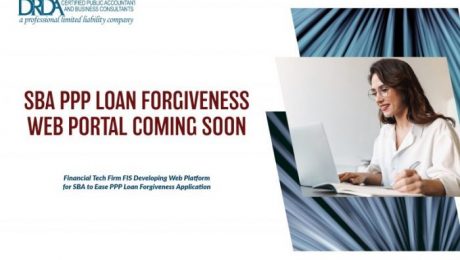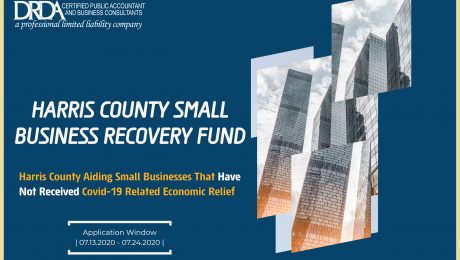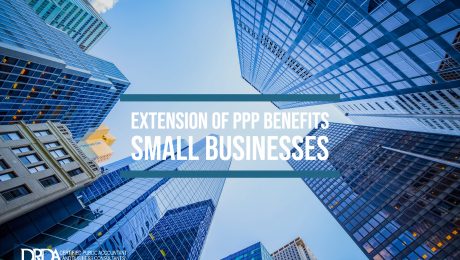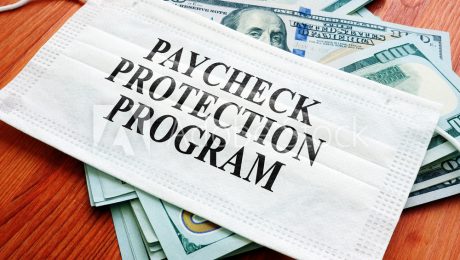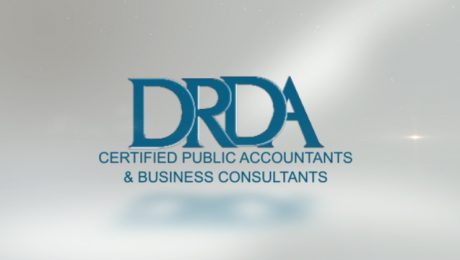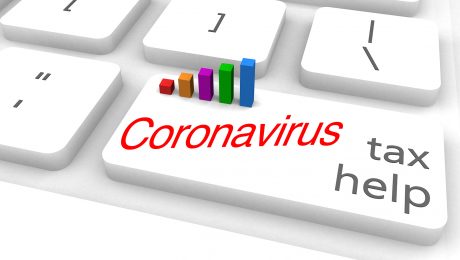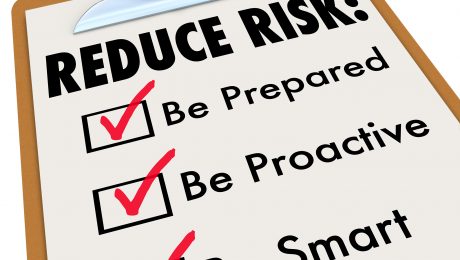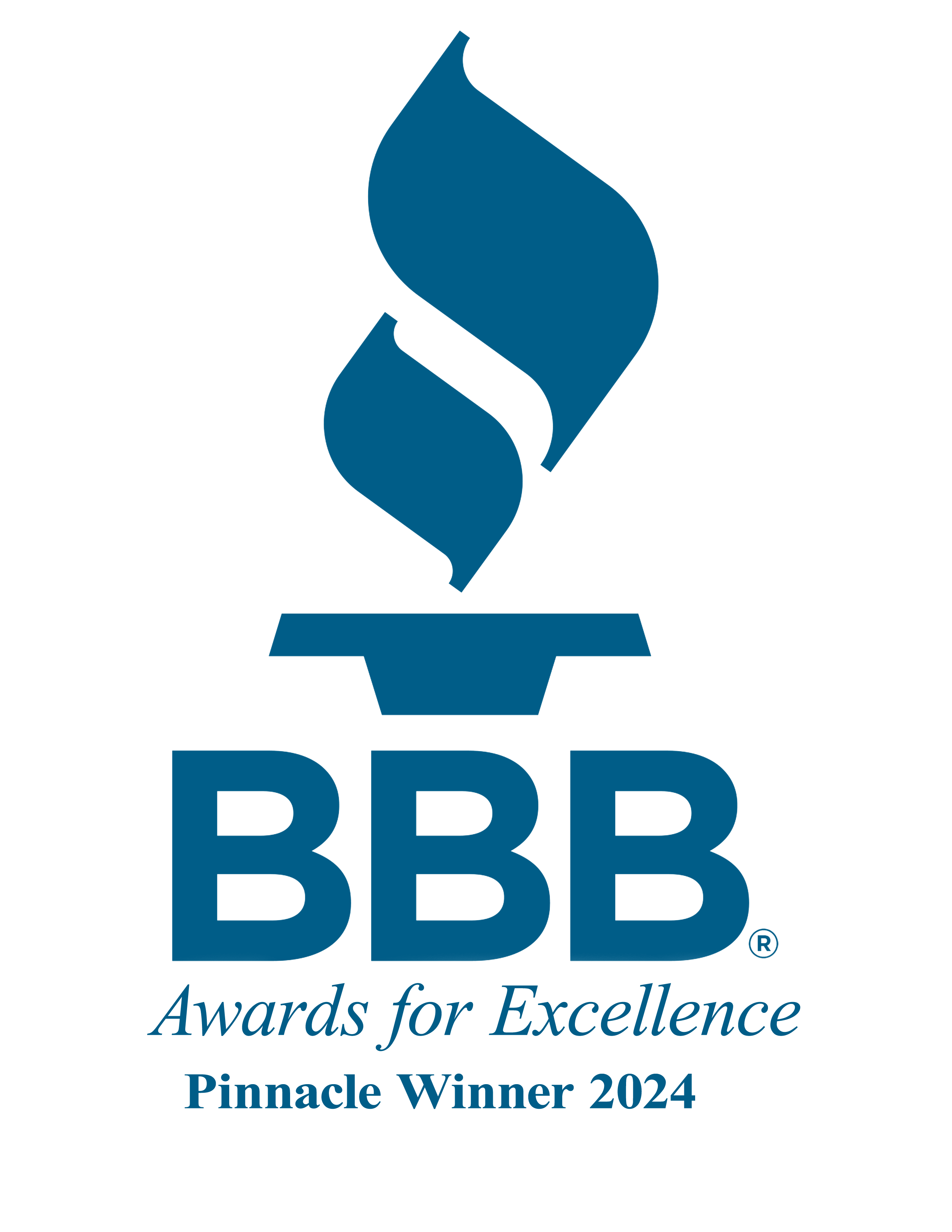According to the Small Business Administration (SBA), there was $518 billion in funding for the 4.9 million Paycheck Protection Program (PPP) loans that were approved. However, Goldman Sachs reported that 84% of small businesses that received a PPP loan will have exhausted the funding by the beginning of August. With October right around the corner, most small businesses have indeed exhausted all their funds and many businesses are fighting to stay afloat amid the COVID-19 pandemic. Furthermore, businesses located in distressed areas and operated by people of color did not have the ability to obtain anything from the first round of PPP loans.
THE SOLUTION
To mitigate businesses from falling under, $240 billion for a second-round of PPP loans could help sustain businesses. This PPP loan would include flexible use, full transparency, simplified forgiveness, and prioritize distressed businesses. Borrowers would have an easier application as there will be significantly less paperwork to fill out for loans under $150,000 but would still have to maintain the record as SBA reserves the right to “review and audit these loans to ensure against fraud.” The flexible use could include allowing businesses to use the loan for face masks, plexiglass shields, improving HVAC system, and/or adding furniture that encourages social distancing.
With $145 billion remaining from PPP to be re-appropriated, $95 billion of the money can be distributed into a variety of things, including $11 billion for Community Development Financial Institutions Funds (CDFIs), $17 billion for small/community banks, $17 billion for mid-sized banks, and $50 billion for Economic Injury Disaster Loans (EIDLs). The CDFI program offers both financial assistance and technical assistance to CDFIs. This assistance allows the CDFI organizations to meet the needs of the communities they serve by financing businesses and providing affordable housing units. Small and mid-sized banks would benefit from the relief by not collapsing after loaning money to businesses that have gone bankrupt due to the pandemic. The EIDL program is designed to provide economic relief to businesses affected by COVID-19. This covers working capital and normal operating expenses such as:
- Health care benefits
- Rent
- Utilities
- Fixed debt payments
The other $50 billion can be used for Targeted Employee Retention Tax Credit (ERTC). This is a refundable tax credit against certain employment taxes equal to 50% of the qualified waged an eligible employer pays to employees from March 12,2020 to January 1, 2021. Those eligible can receive immediate credit by reducing employment tax deposits.
The Main Street Lending Program should also be rectified to help businesses in need. This program was established on April 9, 2020 by the Federal Reserve to support small to medium profit businesses and nonprofit organizations that had good financial standing before COVID-19. The Federal Reserve will buy 95% of new or existing loans to qualified employers, while the issuing bank will keep 5% to discourage irresponsible lending. In exchange for the loan, employers must make reasonable efforts to maintain payroll and retain workers.
However, even with these solutions, Congress has yet to pass the second-round PPP loans, and according to the Silicon Valley Business Journal, the chances of a second round of PPP loans or any small business stimulus from Congress is beginning to fade as the election nears.
SUBMITTED BY:
Kendra May
Despite the $630 Billion funding provided by the Treasury Department and Small Business Administration (SBA) through the Payroll Protection Program (PPP) to assist small businesses survive during the Covid-19 crisis and subsequently over 170,000 jobs saved, there are almost 140,000 small businesses that still remain closed. Of the closed businesses, approximately 41% will remain that way permanently, according to Yelp’s Economic Impact Report.
LOAN FORGIVENESS
Business owners are now wondering what happens to a small business that received PPP loans if it goes out of business. Loan forgiveness will depend if funds were completely utilized for the purposes of keeping the business open, regardless of amount. The PPP program states that if a PPP beneficiary utilized all funds within the time-frame given them (eight weeks, or twenty-four weeks for those who received an extension thanks to the PPP Flexibility Act), and can demonstrate that 60% of the loan went to payroll, then the PPP loan qualifies to be completely forgiven. However, should the beneficiary not meet the requirements for loan forgiveness, then any amount remaining must be repaid.
Businesses that borrowed PPP and/ or disaster loans of $25,000 or less will generally benefit from more favorable terms from lenders, according to financial experts. In the event of bankruptcy, loans of small amounts can generally be forgiven, provided the borrower acted in good faith (utilized funds as stipulated). However, if small businesses misused its PPP loans and then closed permanently, the SBA and Treasury have made it clear they intend to pursue monies owed.
DON’T DEFAULT
In the unfortunate event the borrower cannot repay the loan and defaults, the consequences will depend on the loan amount borrowed. For example, businesses that borrow PPP and EIDL (Economic Injury and Disaster Loan) funds of $25,000 or less are not required to provide collateral or personal guarantees to the financial institution. As such, lenders usually are not able to seize business or personal assets to cover the loss. This does not mean that the business owner is out of the woods! Keep in mind that PPP and EIDL loans are government loans, thus making the U.S. Government the actual lender. Although personal or business property may not be seized, the federal government can report borrowers who default to all credit bureaus, making it very difficult to obtain future credit. And even if a business (in default) can obtain credit, it will mostly likely come with a high interest rate. Furthermore, the federal government can also seize any income tax refunds or other amounts owed to the borrower.
For business owners that borrowed amounts, specifically EIDL (Economic Injury and Disaster Loan) loans, greater than $25,000 this situation becomes a bit more complex. Should the business close permanently and is not able to repay amounts owed, the SBA can appropriate any assets, including warehouse inventory, receivables, machinery, trucks and other items to cover the borrower’s debts.
In addition, businesses that received EIDL amounts of $200,000 or greater, which requires borrowers to provide personal guarantees before loans are granted, can have even their personal property, including cars, bank accounts, investments and/ or personal tax refunds seized to cover outstanding amounts. “That is a much scarier proposition,” said Paul Becht, CPA, partner at Margolin, Winer & Evens, of personal guarantees required for large EIDL loans.
THE SILVER LINING – CHAPTER 11 BANKRUPTCY TO THE RESCUE
Despite millions of small businesses receiving federal aid to survive the pandemic crisis, many businesses expect to close permanently. “I think this will become one of the biggest issues [for loan recipients],” said Nick Oberheiden, a Dallas-based attorney. “I received the loan, I’m going out of business, now what happens to my loan liability?”
There is, however, a silver lining: rather than defaulting, businesses can seek protection by filing for Chapter 11 Bankruptcy under the Small Business Reorganization Act. Chapter 11 Bankruptcy permits “small businesses a really fast and unbureaucratic reorganization while they’re in bankruptcy protection,” said Mr. Oberheiden. Normally, PPP and EIDL loans can be dismissed in bankruptcy, per Michael Brauneis, managing director of Protiviti, a financial services consulting firm. However, as Sharon King, Executive Director of the Boulder Small Business Development Center points out, “most or all of the loan is likely to be discharged as part of the process (provided) the borrower has acted in good faith.”
The SBA has yet to provide additional instruction pertaining to PPP and EIDL loan forgiveness, particularly for business that closed permanently, or are in bankruptcy protection. Once guidance is provided, borrowers should have a better idea on how their PPP and disaster loans will be handled.
With the deadline for applying for a Small Business Administration (SBA)’s Payment Protection Program (PPP) extended, additional businesses are taking advantage of applying for a PPP business loan. Once business have utilized the funds to pay employees and company expenses, borrowers can apply for either loan forgiveness, or if not all the funds were utilized, begin repayment of the remaining portion. To simplify repayment, the Small Business Administration (SBA), in conjunction with the U.S. Treasury Department, plans to release a new online portal to simplify the PPP. FIS (Fidelity National Information Services), a provider of financial technology services to business and communities world-wide, is developing the online. The SBA aims to have the web portal available in August.
Available to all businesses and lenders, the portal will provide an easier method for executing the PPP loan forgiveness procedure from start (application filing) to finish (approval). Financial institutions can set up the FIS Portal quickly, with minimal time consumption. Once setup, lenders can enter data pertaining to borrowers and their corresponding loans, so that pre-filled applications can be provided to borrowers for quick completion and submission. Required documentation proving funds used to cover mortgage payment, utilities, required amount to payroll and other expenses, can be uploaded digitally to the portal as well.
The FIS Portal determines the loan amount that will be forgiven based on the information provided. The results are presented to the lender for review and/ or approval, then to the borrower (and back to lender) for e-signature (electronic signature). Once the application is processed completely, the Portal submits the documents to the SBA for confirmation.
“As a critical infrastructure provider, FIS is focused on making it as easy as possible for small businesses and merchants to complete the loan forgiveness process and help them get back to business as soon as possible,” said Rob Lee, head of Global Core Banking and Channels, FIS. “Our new portal uses advanced automation technology to handle the entire process, reducing the time and complexity for businesses in getting forgiveness of the essential loans that are critical to their business.”
FIS Real-Time Lending previously helped expedite the distribution of SBA PPP Loans through financial institutions to borrowers impacted by the Covid-19 crisis.
The Harris County Small Business Recovery Fund (SBFR), a $30 million grant program approved on June 30th to aid small businesses that have not received Covid-19 related economic relief, took effect yesterday, Monday, July 13, 2020 at 8am. The SBFR program will run for ten (10) business days. The last day to submit applications will be Friday, July 24, 2020 at 3:30pm.
Funded through Harris County, the SBFR program is designed to help small business owners remain open as Texas continues to fight the coronavirus crisis. Businesses that meet certain criteria will be awarded grants up to $25,000 to assist covering expenses including Payroll, rent, accounts payable, utilities and other operating costs.
“The impact of this crisis on small businesses has been devastating. We can’t afford to lose a source of jobs, innovation and the enterprising spirit our region is known for,” Harris County Judge Lina Hidalgo said. “These grants will help business owners stay afloat as Harris County continues to fight the COVID-19 crisis.”
Eligible businesses that qualify for the Harris County SBRF grants include (but are not limited to):
- Sole Proprietorship
- Partnerships
- Self-Employed Individuals
- Non-Profits
- Independent Contractors
Organizations including gambling, residential builders, speculative real estate investors and sexually oriented businesses are not eligible to apply.
Eligible firms (for and non-profit) must meet the following requirements to qualify for financial relief funds:
- Must have been operating for the entire 2019 calendar year;
- Must have 30 or fewer employees;
- Be in good standing with local, state, and federal governments with no outstanding tax obligations or liabilities;
- Must be located within Harris County. Organizations located within the city of Houston are not eligible for the program unless they are located within Precinct One; and,
- Must prove that the Covid-19 pandemic negatively impacted operations.
Qualifying businesses can apply for SBRF assistance online at www.harriscounty-sbrfund.org. Applicants that cannot apply online may call (713) 845-2476 for information on filing an application by mail or email.
In addition to the application, businesses must also include the following supporting documentation:
- Business tax return for 2018 or 2019
- Income and expenses for 3 months
- Articles of incorporation, business license or DBA certificate
- W-2 statement, pay stubs, or personal tax return.
Businesses approved for SBRF aid will receive 75% of the amount granted within 30 days from the date the program closes (July 22, 2020). To receive the remaining 25% of grant aid, businesses must show proof that it is still operating as of November 30th, 2020.
Organizations that have previously received Covid-19 aid through the SBA’s Payroll Protection Program and other state or local finical relief are also eligible to apply for SBRF relief. However, businesses that have not yet received any assistance from Federal or Local assistance programs are receiving priority.
As the Covid-19 Pandemic continues to hit the U.S. economy, businesses are struggling to maintain afloat. As a result, consumers, who are now either unemployed or dealing with cuts in pay are having to reprioritize what goods and services to consume. This has led to a surprise growth in some business sectors, while others continue to deal with dropping demand.
The new challenges posed by the Covid-19 Pandemic are being overcome through the implementation of ingenuity: creating new business strategies. Businesses that are implementing new business models are expected to see increased sales, despite restrictions local authorities have enacted to reduce the spread of the Coronavirus.
There are already several business sectors that are implementing new strategies, including:
- Restaurants :
– If consumers cannot dine at the facility, restaurants are now offering online ordering and delivery service.
– Groceries and paper goods can now be purchased at many restaurants. - Businesses with more than 50 employees (including large, multinational corporations) are enabling their employees to work from home by setting up home offices.
- Furniture stores, seeing an increase in the need for office furniture as more workers are working from home, have increased inventory and are providing quick delivery of office equipment to employees homes.
- Grocery stores have begun offering both curb side pickup and same day delivery of grocery items .
- Telehealth – With the use of a wide variety of modern technology and services, healthcare professionals can now impart non-clinical services, such as provider training, administrative meetings, and continuing medical education, in addition to clinical services, to organizations worldwide.
- Telemedicine –Health care professionals are now utilizing telecommunications (computer or mobile phone) to evaluate, diagnose and treat patients remotely. This trend is quickly becoming part of the new norm in medical care.
Lastly, small businesses should remember to continue implementing that magic ingredient that keeps clients coming back: Good customer service and personal interaction ! Always remember these four steps:
- Put yourself in the place of the consumer: be ready to provide not only great service, but respect any precautions that the client may follow at home.
- Be honest with consumers: Offer solutions to what they truly need.
- Go the extra mile. Understand that we are all in the same boat, trying to get past this pandemic. Clients are feeling what you feel. And,
- Keep in contact with clients (email, social media). Let them know you are there if they need you.
In the wake of these unprecedented times, the world economy is changing the landscape of how we conduct business, and in retrospect, is expected to last beyond the Covid-19 pandemic. Particularly as businesses begin to save on office rental costs, consumers save time by having groceries ready for curb-side pickup, and even virtual doctor visits becoming more common, the full potential offered by digital communication in the form of e-commerce will finally reveal itself.
For additional reading:
- https://colemanreport.com/main-street-monday-the-impact-of-covid-19-on-small-business-retail-opportunities
- https://www.mainstreet.org/blogs/national-main-street-center/2020/07/02/covid-19-and-the-impact-of-retail-part-2?utm_source=July+6%2C+2020%2C+Daily&utm_campaign=061319+Daily&utm_medium=email
- https://www.mainstreet.org/blogs/national-main-street-center/2020/06/30/covid-trends-and-the-impact-on-retail?CommunityKey=c40a84d1-46b2-465c-985c-c08ed69081ab&tab=.
- https://www.sarasotamagazine.com/news-and-profiles/2020/04/these-restaurants-are-selling-pantry-and-grocery-items-take-out-style
- https://chironhealth.com/blog/telemedicine-vs-telehealth-whats-the-difference/#:~:text=Telemedicine%20is%20a%20subset%20of%20telehealth%20that%20refers,clinical%20services%20to%20patients%20without%20an%20in-person%20visit.
- https://chironhealth.com/telemedicine/what-is-telemedicine/
- https://www.msn.com/en-us/money/other/how-to-rethink-your-business-model-post-covid-19/ar-BB14LFnN
Small business owners were given an extra reason to celebrate July 4th, as President Trump signed into law an extension of the SBA’s Payment Protection Program into law. Small business owners now have until August 8th to apply for a small business loan to meet employee payroll, rent, utilities, and other expenses. The original deadline to apply for the PPP loan assistance was this past Tuesday, June 30th.
With over $130 Billion left in funds from the approximate $660 Billion approved for small businesses, Congress would have had to reallocate the funds elsewhere had the original application deadline not been extended. Provided small business utilize 60% of the funds to cover employee’s payroll, the loans can be forgiven, essentially becoming a grant.
When Congress reconvenes on July 20th following a two week recess, it must then decide how to allocate the remaining budget before the new filing extension ends on August 8th. The new PPP deadline extension also grants Congress time to draft another, more refined economic relief package aimed at assisting businesses impacted the hardest by the economic crisis as a result of the Coronavirus Pandemic .
Additional Information:
- Sara Hansen, Forbes Magazine : https://www.forbes.com/sites/sarahhansen/2020/07/04/trump-signs-ppp-extension-bill-giving-small-businesses-another-5-weeks/#14e5239e59bf
- Matthew Schwartz, NPR: https://www.npr.org/2020/07/04/887322386/trump-signs-small-business-loan-program-extension
- See above.
- https://www.washingtonpost.com/us-policy/2020/07/06/congress-departed-two-week-recess-without-addressing-coronavirus-spikes-economic-strains/
- Sarah Westwood and Phil Mattingly, CNN Politics: https://www.cnn.com/2020/07/04/politics/trump-ppp-extension/index.html
DRDA’s President, Mr. Douglas A. Dickey, CPA, CEPA, was spotlighted this week in Houston’s news publication “Houston Business Journal.” Mr. Dickey covered the current economic crisis that most small businesses in the U.S. have experienced due to the Covid-19 Pandemic and how the Small Business Administration’s Paycheck Protection Program has currently aided more than 4 million small businesses from closing their doors.
The SBA’s PPP program originally set out for small businesses to utilize loans within an eight week span, the timeframe that the U.S. government officials expected the pandemic t last. However, the pandemic has extended further than anticipated. “This PPP was designed to survive for a 90-day period of time — 60 days of stay-at home, 30 days to ramp back up,” Mr. Dickey said. “That doesn’t seem to be happening, so now what do we do?”
In order to extend economic relief to small business, Congress passed the Paycheck Protection Program Flexibility Act in June. Businesses are now permitted to extend the use of the funds received from extended from eight to 24 weeks, and utilize 40% of the loan to cover non-payroll expenses. This is particularly helpful for business that remain closed. “If your business is completely shut down and you’re not making any money, you’re going to have some rent costs, you’re going to continue to have note payments,” explained Mr. Dickey. “You’ve got ongoing costs, but you’ve got no income coming in.”
Set to expire at midnight on Tuesday, June 30th, the U.S. Senate decided to extend the Small Business Administration’s Paycheck Protection Program for small businesses until August 8th. The program was set to close down Tuesday night with $130 billion in funding left over. The bill has passed the House & Senate, and is awaiting the President’s signature. Small business owners have until August 8th to apply for the program.
The Small Business Administration (SBA), which runs the program with the Treasury Department, was set to stop accepting new applications on Tuesday, June 30th, at 11:59 p.m., Eastern Time. With over $130 Billion left in funds as of Saturday, June 28, the unused portion was set to return to the U.S. Treasury Department, unless Congress allocated the funds elsewhere. Of the $650 billion allocated to help small businesses, just over $520 Billion in loans were approved and issued to nearly 4.9 million small business by Tuesday night, the SBA said.
Sen. Ben Cardin, D-Md., who presented the bill extending the filing deadline, stated “We thought by the end of June that our economy would be on track and we would not need to have additional applications after that date.” The Paycheck Protection Program, referred to as PPP, is designed to offer loans to small businesses to cover expenses, including employee salary during the economic crisis caused by the Covid-19 Pandemic. As Sen. Chris Coons (D-Del.) points out: “There are millions of small business that are barely open now. With the likelihood of either renewed closures or much slower reopening, we have literally millions of small business nationwide at risk.” With the Covid-19 crisis still looming over most of the country, and with fall and winter around the corner (not to mention a heavily active hurricane season forecast), signs of financial stability rebounding to pre-Coronavirus levels by the end of the year remain bleak.
One of the great benefits of the SBA’s Paycheck Protection Program is that the loan amount granted to small business owners to keep their business open and employees from losing their jobs, if utilized according to SBA Guidelines, do not have to be repaid. Hence, the loan converts into a grant. This eases pressure on small business as they struggle to generate revenue to keep afloat. With many small companies struggling to keep open, the government assistance offered via the SBA is a welcomed relief.
For Additional Information, see:

DRDA’s own Jennifer Lopez, Human Resources and Learning Development Coordinator was spotlighted this week in the University of Houston – Clear Lake news publication “The Signal.”
The article covers her educational path as a student and parent, and now with a full-time career. “I think the most important thing I learned,” said Jennifer, “is how to take a curriculum outside of my classroom and into a board room or training room. Just because its education doesn’t mean it has to be in a K-12 classroom. It can be corporate or anywhere.” She continues to add, “What I learned in my undergraduate classes at UHCL is to be a better instructor across the board, whether it’s a child or an accountant.”
“Her skill sets were amazing,” said Dr. Jana Willis, Professor of Instructional Design and Technology, “she had worked very hard to get to where she was in her educational journey. Her journey took her from NASA aerospace scholar, to computer engineering, to mathematics major, to a master’s degree in instructional technology, and now to a doctorate in curriculum and instruction. It’s all adding to the brilliance I saw in that undergraduate classroom. Jennifer is a role model for all UHCL students.”
Jennifer will be Graduating this May, receiving her Master’s degree in Instructional Technology and Design with a specialization in Human Resources.
The IRS has announced that small and midsize employers can begin taking advantage of two new refundable payroll tax credits provided by the Families First Coronavirus Response Act (the Act). The credits are designed to give businesses with fewer than 500 employees funds to provide coronavirus-related paid leave, either for an employee’s own health needs, or to care for family members. Under the Act, employees receive up to 80 hours of paid sick leave for coronavirus-related reasons and expanded paid child care leave when schools are closed or child care providers are unavailable. To take immediate advantage of the paid leave credits, employers can retain and access funds that they would otherwise pay to the IRS in payroll taxes. If those amounts are not sufficient to cover the cost of paid leave, employers can seek an expedited advance from the IRS by submitting a streamlined claim form that will be released in the near future. News Release IR 2020-57.
Families First Coronavirus Response Act (Act), signed by President Trump on March 18, 2020.
Corona-virus related reasons is a very broad category and does not require the employee to technically be sick. A shelter in place restriction issued by a government entity qualifies.
COVID-19 CLIENT MEMO FOR FINANCIAL REPORTING CONSIDERATIONS
You have asked us for assistance in identifying financial reporting considerations related to the risks and uncertainties associated with the Coronavirus (COVID-19) epidemic. COVID-19 has begun to cause significant disruption in the global economy. The ripple effect is far-reaching across multiple industries, including travel and hotel companies, airline companies, manufacturers, and companies in the supply chain. Companies have begun issuing warnings that revenues may be adversely affected by the virus, and early warnings are important to investors; however, the challenges posed by this virus are unprecedented, and the scope and downstream effects are still unknown. Given the uncertainty of the current environment, reporting entities must balance the accuracy of the information available against the need to provide appropriate, adequate disclosure for investors.
Here are some considerations to keep top of mind while preparing financial statements:
Geographic concentration of business operations. An entity will need to evaluate the extent to which it relies on operations in countries outside the US, especially China, South Korea, Italy, or other areas of the world with confirmed spread of COVID-19. An entity that has business operations in these countries will need to evaluate the risk of a material disruption, which may have to be reported in the 10-K under Item 1A. Risk Factors. These effects may also lead an entity to restructure its operations, which could lead to changes in its business segments under Topic 280, Segment Reporting.
Subsequent events. COVID-19 was first identified in December 2019, so the entity will have to determine what disclosures are required under Topic 855, Subsequent Events, based on the entity’s individual facts and circumstances. It may be necessary to provide additional disclosures or even adjusted financial statements.
Volatility. Asset valuations may be adversely impacted by the uncertainty in the financial markets. This could result in unanticipated losses, which may or may not be unrealized. The entity will have to ensure valuations are correct as of the reporting date, which can be challenging in a highly volatile market.
Credit risk. Entities will have to monitor changes in their customers’ credit risk and decide if credit impairments or loan write-offs are necessary.
Liquidity risk. Entities will have assessed their ability to meet short-term obligations. Expanded liquidity disclosures may be necessary.
Pension and other postretirement plans. Entities will have to monitor pensions and other postretirement plans for potential changes to the funded status.
Hedging. The entity may need to reevaluate its hedging strategies and examine its hedges to determine the extent of hedge ineffectiveness, which must be recorded in earnings. If a hedge is no longer highly effective, then hedge accounting under Topic 815, Derivatives and Hedging, can no longer be applied.
SEC guidance and expectations. In a public statement issued January 30, 2020, Chairman of the SEC Jay Clayton said that the SEC will be monitoring disclosures related to COVID-19. Acknowledging that the effects of COVID-19 are beyond the control of issuers, Mr. Clayton said that issuers can still disclose how they are planning for uncertainty and how they will respond to the unfolding epidemic, which could be material to investors.
Entities have already begun to include information related to the Coronavirus in their 10-K filings:
Norwegian Cruise Line Holdings disclosed the following in Item 1A – Risk Factors of its 10-K for the period ended December 31, 2019:
Public perception about the safety of travel and adverse publicity related to passenger or crew illness, such as incidents of viral illnesses, stomach flu or other contagious diseases may impact demand for cruises and result in cruise cancellations and employee absenteeism. For example, the recent outbreak of the COVID-19 coronavirus has resulted in costs and lost revenue related to customer compensation, itinerary modifications, travel restrictions and advisories, the unavailability of ports and/or destinations, cancellations and redeployments and has impacted consumer sentiment regarding cruise travel. The spread of the COVID-19 coronavirus, particularly in North America, could exacerbate its effect on us. Any future wide-ranging health scares would also likely adversely affect our business, financial condition and results of operations.
United Airlines, Inc. disclosed the following regarding the risks from the Coronavirus in item 1A – Risk Factors and in Note 16 – Subsequent Events of its 10-K for the period ending December 31, 2019:
In December 2019, a novel strain of coronavirus (“COVID-19”) was reported in Wuhan, China. The World Health Organization has declared COVID-19 to constitute a “Public Health Emergency of International Concern.” On January 30, 2020, the U.S. Department of State issued a Level 4 “do not travel” advisory for China. The U.S. government has also implemented enhanced screenings, quarantine requirements and travel restrictions in connection with the COVID-19 outbreak. The Company has suspended its flights between the United States and each of Beijing, Chengdu, Shanghai and Hong Kong through April 24, 2020. These routes represented approximately 5% of the Company’s 2020 planned capacity and the Company’s other trans-Pacific routes represented an additional 10% of the Company’s 2020 planned capacity. As of the date of this report, the Company is experiencing an approximately 100% decline in near-term demand to China and an approximately 75% decline in near-term demand on the rest of the Company’s trans-Pacific routes. The extent of the impact of the COVID-19 on the Company’s operational and financial performance will depend on future developments, including the duration and spread of the outbreak and related travel advisories and restrictions and the impact of the COVID-19 on overall demand for air travel, all of which are highly uncertain and cannot be predicted. If traffic on the Company’s trans-Pacific routes were to remain at these levels for an extended period, and/or routes in other parts of the Company’s network begin to see significant declines in demand, our results of operations for full year 2020 may be materially adversely affected.
Of course, you must evaluate the effects of the Coronavirus on your own business based on your unique facts and circumstances and tailor your disclosures accordingly. If you have any questions or concerns – Please email us direct at laurian@drdacpa.com or mickey@drdacpa.com
Beneath the headlines of an outbreak, fatalities in the thousands and infecting tens of thousands worldwide sits other news: panic buying at grocery stores, whipsawing on Wall Street, and the specter of unprecedented disruption to everyday lives and business — all with less than five weeks to go before Tax Day.
–
So, how is DRDA, LLC planning on dealing with coronavirus just as the season heats up?
“We are taking a proactive approach to dealing with this issue,” said Doug Dickey, CPA, CEPA, Principle Partner of DRDA, LLC. “Like any other Hazard Preparedness or Disaster and Emergency Planning, we are committed to having a system in place to ensure the safety and security of our staff and clients with minimal disruption to our services.”
Being prepared to prevent, respond to, and recover rapidly from public health threats can save lives and protect the health and safety of the public. Though some people feel it is impossible to be prepared for unexpected events, the truth is that taking preparedness actions helps anyone deal with hazards of all types more effectively when they do occur.
The IRS is taking a wait-and-see approach: “Our internal working group will continue to closely watch this and promptly respond to any emerging situations to protect our employees and taxpayers interacting with the agency,” the agency said in a statement. “Normal IRS operations are continuing, and we are seeing a strong, smooth filing season for the nation.”
More than likely the IRS is developing contingency plans, as they did with the government shutdown. Historically they have developed a hierarchy of essential and non-essential services. Our belief is that return filing and the collection of tax due will be at the top of their essential service list.
Taking it seriously
“DRDA, LLC has had remote employees and work from home employees for years. We are ensuring that everyone on our Team is set to work from home if needed,” said Doug Dickey, CPA, CEPA. “
“Different” might be one word to describe the potential disruption. Living on the Texas Gulf Coast we think ahead in detail for weather or power outages. A new and largely unknown virus is a new and different disruption. Since there is very little known of COVID-19, it is being treated as a disaster or an event that would require a business to invoke their Emergency Plan. It is imperative to be prepared with a contingency plan for any natural or systemic challenge.
In the event of a citywide mandate for public safety which would require the staff to stay home; we will continue to serve you by enabling our staff with home workstations, along with constant communication with the entire firm and our clients. Our computer and phone systems have been in the cloud and VOIP for years. There is no difference in access from home or office.
Digital exchange
Tax prep also often depends on face-to-face conferences with clients with little more than the width of a desk between us.
Most preparers complete hundreds of individual returns per year and have face-to-face meetings with about ten percent of the clients. The trend in our industry for the more substantial firms has been leading to digital productivity and remote access. As stated previously DRDA, LLC has been digitally in the cloud for years so the impact to our business will be minimal. Almost everything we do can be conducted remotely via phone, video conferencing, email, fax, secure portals and remote electronic signatures.
We encourage our clients who normally come in for an interview or drop off, pick up or mail their documents to upload their information through the secure client portal if you can. With less interviews, and traditional mailing routes, there would be less contact and increased safety for all. We are all human and human safety and well-being is always our first concern.
Technology will help
We have encouraged clients to use the portal and upload their documents since the beginning of Tax Season (click here to access our secure portal). We believe in these times, if more clients utilize this approach, it will foster a safer and better document delivery and acknowledgment process for everyone. We are currently enhancing our website with even more detailed information about how to use the portal if you choose this option (click here for help with our secure portal).
To make certain we can continue to serve you, DRDA, LLC has incorporated applications from the cloud, with two-factor authentication. In the event of a virus emergency, the firm’s e-workflow would involve alerts to clients in case of quarantine; instructions to use the firm’s encrypted portal; staff scheduling and payroll; monitoring of each stage of work; shipment to the client for e-signature and electronic payment; and e-filing.
Rest assured we are working diligently to ensure a seamless transition in the event of an emergency happening. Our primary endeavor is the safety and security of our staff, clients and community while serving you.
If you have any questions or concerns, please do not hesitate to contact us directly.
- 1
- 2

